![]()
Lesson
Three: Objects in the Solar System
by John Barra
![]()
![]()
![]()
You
can learn to use your telescope by practicing on the Moon and the planets
of our solar system. Planets will be the brightest objects in the constellations
in which they can be found. Once you have an object centered in any finderscope,
look at it through the eyepiece.
These objects will take high power -- the lower the size of the eyepiece, the higher the power or magnification. Practice moving the telescope while looking in the eyepiece to learn your directions.
THE
MOON
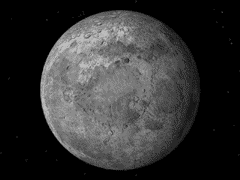
Use a low power eyepiece at first that will show the entire Moon. After centering a particular area you want to view, you can change to one with higher power.
Start with a Full Moon. The darker areas are called mare or "seas." The lighter areas are higher land formations including mountain ranges. Craters can be seen in both. Ejecta rays can be seen extending from certain craters. The most prominent rays extend from the crater Tycho. They should be easy to find.
As the Moon goes through its phases, the shadow of the Sun travels across the lunar surface. The line where the illuminated area and the shadow meets is called "the terminator."
Looking at it in your scope will provide many spectacular sights, particularly on mountain peaks and in craters. Near the terminator you may see the sunlight hitting a peak in a crater’s shadow to form a bright dot. Other times you can see a bright streak across a dark crater surface as the sunlight passes through a break in the crater rim. Soon you will become aware of what you can see best during each lunar phase. You may want to get a lunar map to assist in your exploring.
VENUS
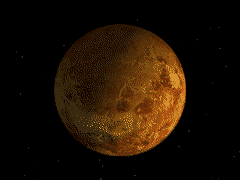
Venus never gets high above the horizon because its orbit is between Earth's orbit and the Sun. It can be seen low in the west when it is in the evening sky and low in the east when a morning object. Venus follows a cycle of about ten months in the evening sky and ten months in the morning. In 1997, it can be observed in the evening from mid-April to the end of the year.
Venus is easy to locate because it will be the brightest object in the sky except the Moon and Sun. Like our Moon, Venus has different phases that are interesting to observe.
MARS
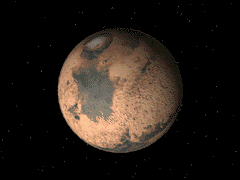
It takes Mars about twice as long to orbit the Sun as the Earth does. Therefore it will be prominent in the sky every two years for about six months. This year Mars is in the constellation Leo. It can be seen in the west in June. Then you will have to wait another 18 months before it becomes observable again.
The most prominent feature you might see is one of its polar ice caps. During those years when Mars is closest to us you should be able to see some of its other larger surface markings.
JUPITER
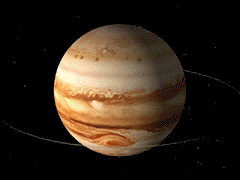
Jupiter takes twelve years to revolve around the sun. Therefore it can be seen in a different zodiacal constellation each year. This year Jupiter is in Capricornus.
Jupiter's four largest moons -- Io, Europa, Callisto and Ganymede -- are the planet's viewing highlights. Because their orbital planes are perpendicular to Earth's orbit, they appear as bright dots along a line.
You can watch them move with respect to each other and Jupiter, hour by hour. At times, one or more of them may be unobservable while passing behind or in front of the planet. Other times they may become fainter or go dark altogether while being eclipsed by Jupiter.
On the planet itself the equatorial zones can be seen as parallel lines. You may be lucky and occasionally see the Great Red Spot.
SATURN
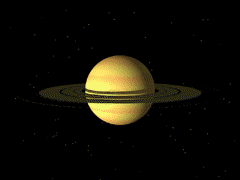
Saturn can be seen in a different constellation every two years. It is visible during the time the constellation is observable. This year Saturn is in Pisces.
Saturn’s ring system is about the most spectacular sight in the solar system. The ring plane is perpendicular to us every 15 years, when it can’t be seen at all.
Such was the case last year. Shortly after that the rings appeared as one bright line. As the ring plane opened up you could see larger portions of the rings. In a small telescope, the rings appeared as one big ring. Other observable highlights are the ring shadow on the surfaces of Saturn and Titan, the planet's largest moon.
Mercury,
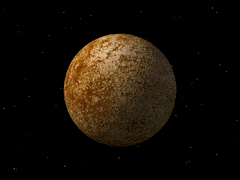
Uranus,
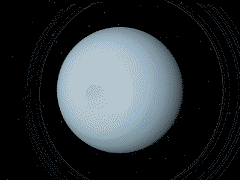
Neptune
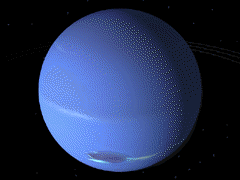
and Pluto
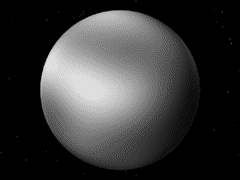
Mercury, Uranus and Neptune are more appropriately the subjects of advanced viewing while Pluto is not observable in most backyard telescopes.
![]()
![]()
copyright © Peoria Astronomical Society 1994-2004.
